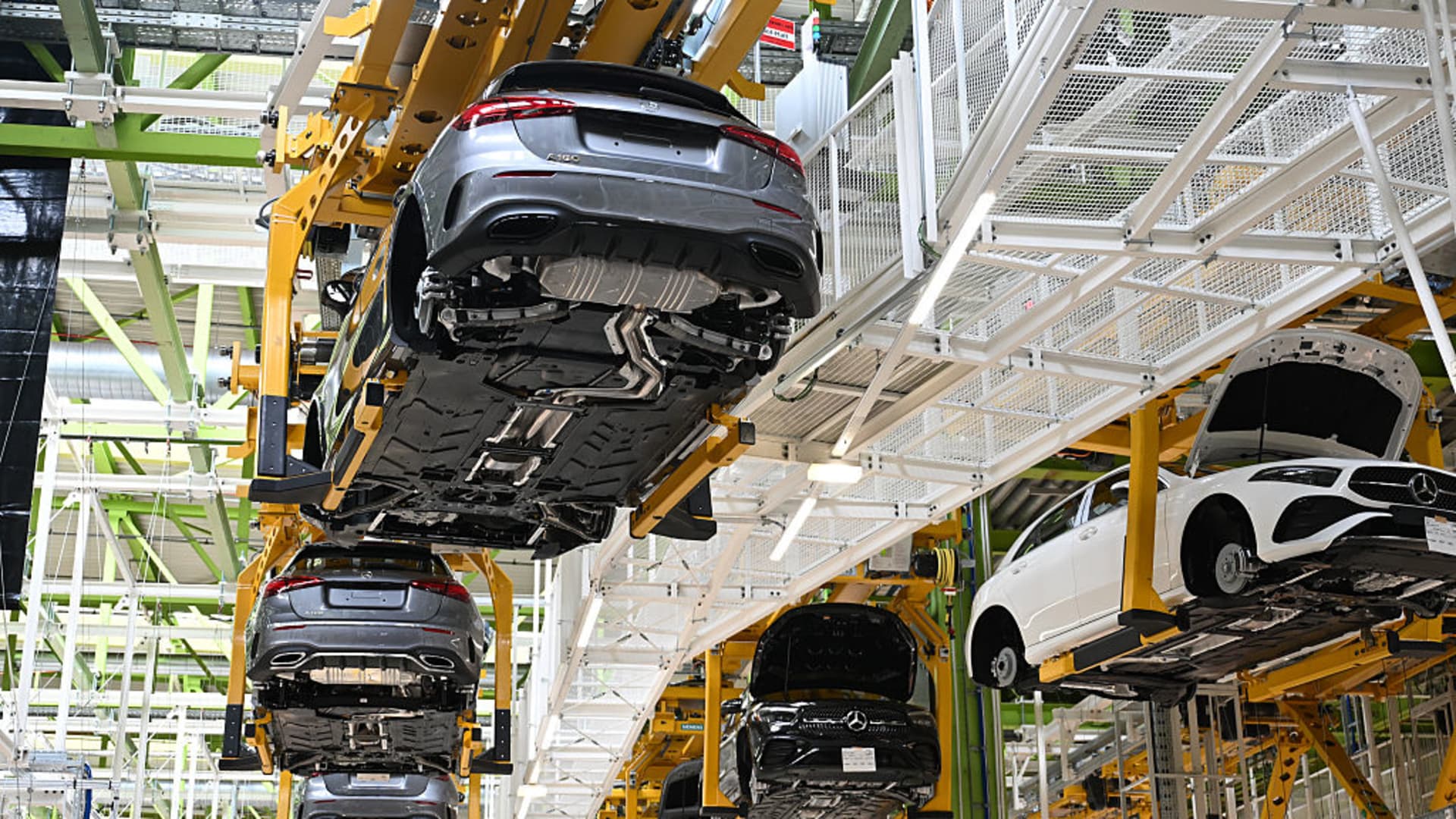UPDATE: In a major development for the global auto industry, a new trade agreement between the U.S. and the European Union has been finalized, significantly altering tariff structures on automotive imports. The agreement, announced just yesterday, introduces a blanket 15% tariff on most EU goods, a drastic reduction from the proposed 30% charges that were set to take effect on August 1.
This landmark deal is being hailed as one of the largest trade agreements ever, with U.S. President Donald Trump emphasizing its potential to benefit the auto sector. However, the implications for industry players are complex, with many expressing concern about the ongoing financial burdens posed by the new tariff rates.
Speaking alongside Trump in Scotland, European Commission President Ursula von der Leyen described the agreement as a “good deal” after intense negotiations. Nonetheless, industry groups are now grappling with the reality of the new tariff structure, which reduces the current EU auto sector tariff from 27.5% but still imposes significant costs.
The German Association of the Automotive Industry (VDA) has recognized the agreement as a step toward avoiding a transatlantic trade dispute, but VDA President Hildegard Müller cautioned that the 15% tariff will cost German automotive companies billions annually. She stated, “The decisive factor now will be how the agreement is structured in concrete terms and how reliable it is.”
The European Automobile Manufacturers Association (ACEA) welcomed the deal as a move toward reducing uncertainty in the industry, but highlighted that the higher tariffs will continue to negatively affect both EU and U.S. automotive sectors. ACEA Director-General Sigrid de Vries noted, “This will continue to have a negative impact not just for industry in the EU but also in the US.”
Economic analysts are also weighing in on the implications of the new tariffs. Rico Luman, a senior economist at Dutch bank ING, stated that while the 15% tariff is an improvement over the previous rate, it still represents “a significant burden” for automakers. He emphasized that profit margins are already under pressure, making it difficult for manufacturers to pass costs onto consumers without risking volume losses.
As markets reacted to the news, the Stoxx Europe autos index initially surged by 1.6% before stabilizing. Despite this, shares of major automotive players like BMW, Volkswagen, and Mercedes-Benz saw declines of over 1.2%. Conversely, companies such as French parts supplier Valeo and luxury carmaker Ferrari experienced gains.
Looking ahead, experts predict that automakers with a higher reliance on imports from Europe, such as Porsche and Mercedes, may benefit more from the agreement. However, companies like Stellantis, which imports a smaller share from the EU, are not expected to see significant advantages.
With this trade deal now in effect, the automotive industry is bracing for the impact of these tariffs as companies strategize to navigate this new landscape. The focus will now shift to how manufacturers adapt their operations and supply chains in response to the evolving trade environment.
Stay tuned for more updates as this story continues to develop.
